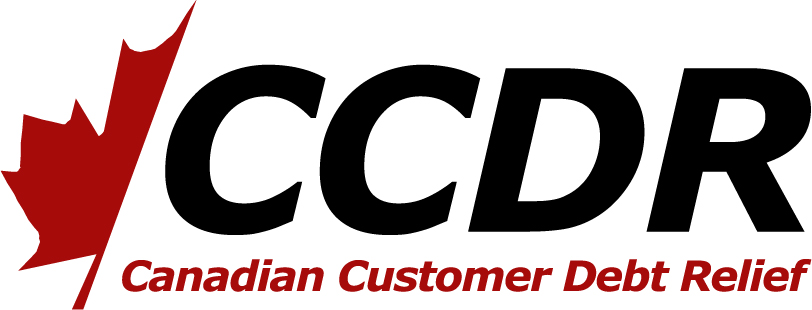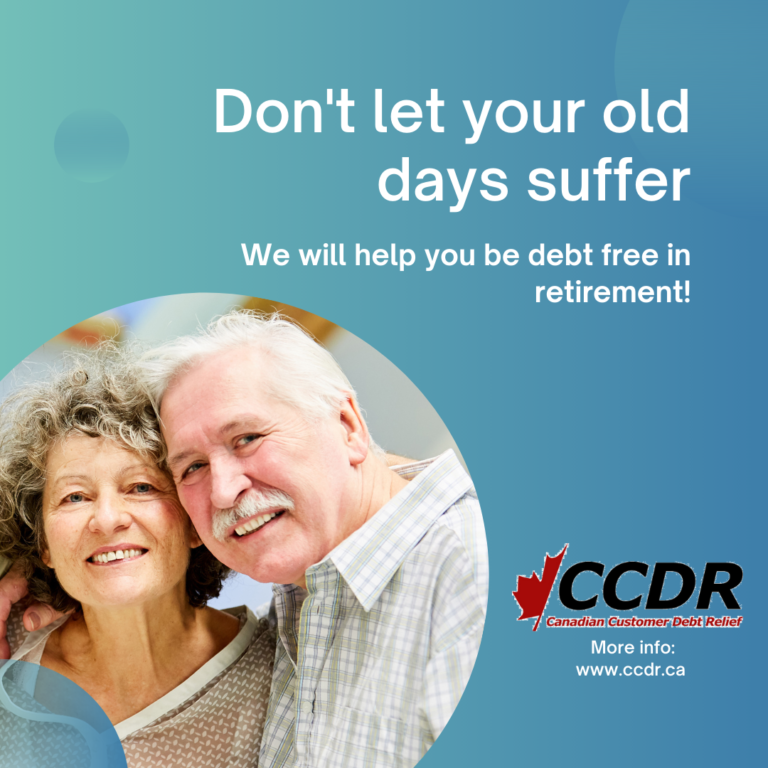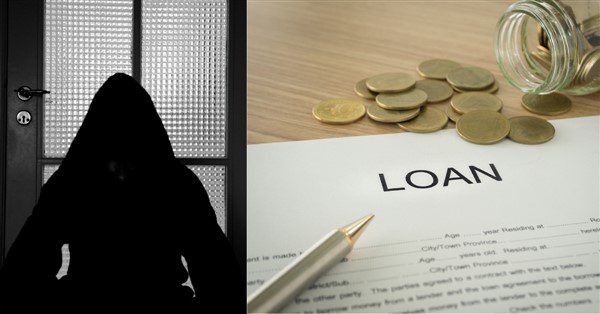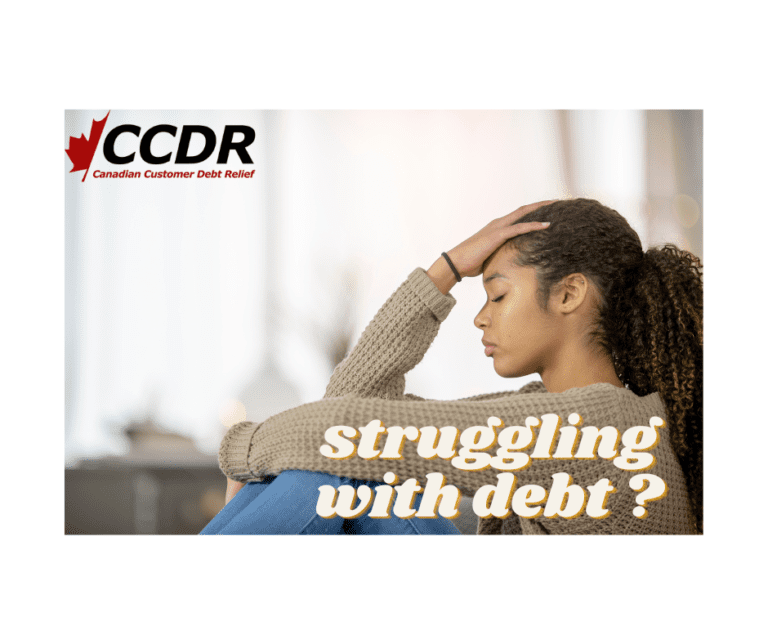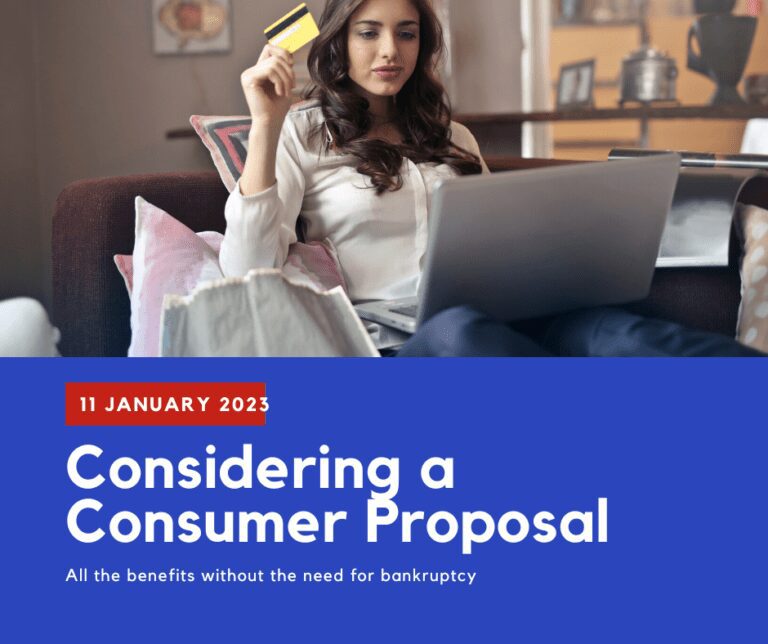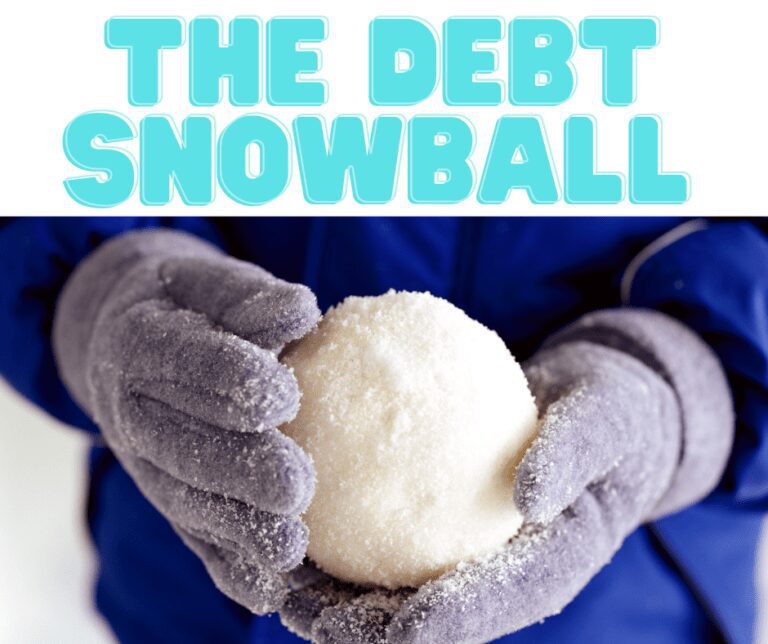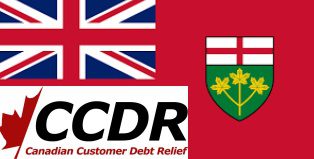Posts Tagged ‘Debt Help’
How would it Feel to be Debt Free?
“🔥 Breaking free from debt isn’t just about money—it’s about reclaiming your life, your choices, and your peace of mind. Every dollar freed from debt is a step closer to a life unchained. 🚀 Here’s to the liberating power of debt freedom! 💪 #DebtFreeLife #UnchainedPotential”
Getting Rid of Debt Before Retirement in Canada
Retirement is a phase of life most Canadians look forward to, dreaming of days without deadlines, meetings, or work stress. But what if the looming specter of debt clouds your hard-earned retirement? Well, worry not. This article will guide you through achieving a debt-free retirement in Canada.
The Necessity of a Debt-Free Retirement
Entering your golden years with a pile of debt can be a massive strain on your retirement savings. You’ve worked diligently to enjoy this period, so why let debt ruin it? Moreover, without a regular income, managing debt can be a daunting task. Thus, it’s crucial to get rid of your debt before retiring.
Understanding the Types of Debt
Before planning your debt elimination, it’s essential to understand the different types of debt that you might be dealing with.
Credit Card Debt
This is one of the most common forms of debt. High-interest rates can make it a significant burden if not promptly addressed.
Mortgage Debt
While having your house paid off by retirement is ideal, it isn’t always possible. Still, reducing this debt can significantly decrease your financial stress.
Auto Loans
If you’re still paying off your car, consider if it’s necessary. It might be worth considering if public transportation or a cheaper vehicle can serve your needs.
The Impact of Debt on Retirement
Carrying debt into retirement isn’t just about numbers. It can have far-reaching implications.
Financial Implications
Debt can drain your retirement savings, limiting your ability to enjoy the retirement lifestyle you’ve dreamed of.
Psychological Implications
The stress from debt can impact your mental health, diminishing your overall quality of life during retirement.
Strategies to Overcome Debt
The road to a debt-free retirement may seem challenging, but various strategies can help you overcome your debt.
Debt Consolidation
This involves combining all your debts into one, often with a lower interest rate, making it easier to manage and pay off.
Debt Settlement
With debt settlement, you negotiate with your creditors to allow you to pay a lump sum that’s less than what you owe.
Filing for Bankruptcy
While this should be your last resort, in extreme cases, filing for bankruptcy can help eliminate debt. Be sure to consult with a financial advisor before making this decision.
How CCDR Can Assist in Your Journey
At Canadian Customer Debt Relief Inc. (CCDR), we’re committed to helping Canadians like you overcome debt. With our A+ BBB rating and over two decades of experience, we’ve assisted countless individuals in navigating their path to a debt-free retirement.
Importance of Early Planning
The earlier you start, the easier it’ll be to handle your debt.
Setting Up a Budget
Creating and sticking to a budget can help you manage expenses and save more.
Increasing Your Income
Consider part-time jobs or freelancing to earn extra income that can be put towards paying off debt.
Investing Wisely
Investments can be a great source of passive income if done wisely.
Conclusion
Retirement should be a time of relaxation, not financial stress. Planning early and wisely can rid yourself of debt and pave the way for a peaceful retirement. CCDR is here to help you in this journey toward a debt-free retirement.
FAQs
1. What is the most common type of debt among retirees?
Credit card debt is often the most common, followed by mortgage debt.
2. Is it too late to plan a debt-free retirement in my 50s?
No, it’s never too late to start planning. However, earlier planning can give you more options and flexibility.
3. Can CCDR help with all types of debts?
Yes, CCDR assists with most types of unsecured debt.
4. What are the psychological impacts of debt in retirement?
Debt in retirement can lead to stress, anxiety, and even depression due to financial insecurity.
5. How can investing help in achieving a debt-free retirement?
Investing can provide a source of passive income that can be used to pay off debt.
Debt Doldrums in Canada and How Canadian Customer Debt Relief can help
Debt Doldrums in Canada and How Canadian Customer Debt Relief can help
Canada is currently facing a significant challenge when it comes to consumer debt. Many Canadians find themselves caught in a cycle of debt, struggling to make ends meet and overcome their financial burdens. This article aims to shed light on the state of debt in Canada and highlight how Canadian Customer Debt Relief can provide much-needed assistance to those in need.
The State of Debt in Canada
In recent years, consumer debt levels in Canada have been steadily rising. According to the Bank of Canada, household debt reached a record high in 2022, surpassing $2.4 trillion. This staggering figure indicates that many Canadians live beyond their means and rely heavily on credit to finance their lifestyles.
Several factors contribute to the increasing debt burden faced by Canadians. One of the main culprits is the easy availability of credit, with credit cards and lines of credit readily accessible to consumers. Low-interest rates and enticing promotional offers often lure individuals into taking on more debt than they can handle.
The Impact of Debt on Canadian Consumers
The burden of debt has far-reaching consequences for Canadian consumers. Financial stress from overwhelming debt can affect individuals’ mental health and well-being. The constant worry about making monthly payments and the fear of falling behind can lead to anxiety, depression, and sleep disturbances.
Moreover, excessive debt limits consumers’ purchasing power and financial flexibility. High monthly debt payments eat into disposable income, leaving individuals with less money for essential expenses, savings, and investments. This can hinder their ability to achieve important life goals, such as homeownership or funding their children’s education.
Canadian Customer Debt Relief: How It Works
Canadian Customer Debt Relief is a reputable debt relief program designed to assist Canadians in overcoming their debt challenges. The program follows a structured process to provide effective and personalized debt relief solutions.
The first step in Canadian Customer Debt Relief is thoroughly assessing the individual’s financial situation. This involves evaluating their income, expenses, assets, and liabilities to understand their overall financial health comprehensively.
Based on this assessment, Canadian Customer Debt Relief develops a customized debt relief plan tailored to the individual’s needs and goals. This plan may involve a combination of debt-help strategies.
Canadian Customer Debt Relief provides ongoing support and guidance throughout the debt relief journey. Their team of financial experts offers advice on budgeting, money management, and improving credit scores. They aim to empower individuals with the necessary tools and knowledge to regain control of their finances and maintain a debt-free future.
Benefits of Canadian Customer Debt Relief
Engaging in a Canadian Customer Debt Relief program offers several benefits for individuals struggling with debt. Some of the key advantages include:
- Lower interest rates: Canadian Customer Debt Relief can secure 0% interest rates, reducing the overall cost of debt repayment.
- Reduced monthly payments: Through our debt help program, individuals can lower their monthly payments, making them more affordable and manageable within their budget.
- Consolidated debt management: Combining multiple debts into a single debt simplifies repayment. Instead of juggling various due dates and payment amounts, individuals only need to focus on a single monthly payment.
- Improved credit score: Completing a Canadian Customer Debt Relief program can improve an individual’s credit score. By consistently making timely payments and reducing debt, individuals demonstrate responsible financial behavior to credit agencies.
Conclusion
The escalating debt levels in Canada have put many individuals in challenging financial situations. However, Canadian Customer Debt Relief offers hope for those struggling with overwhelming debt. By providing personalized debt relief solutions, Canadian Customer Debt Relief aims to alleviate financial burdens and help individuals regain control of their finances.
Canadian Customer Debt Relief can tailor a customized plan that addresses their needs by assessing the individual’s financial situation. This personalized approach ensures that the debt relief strategy aligns with the individual’s goals and financial capabilities.
One of the primary advantages of Canadian Customer Debt Relief is 0% interest rates. The program secures a 0% interest rate, minimizing the overall cost of debt repayment. This can significantly ease the financial strain on individuals and expedite the path to debt freedom.
Additionally, Canadian Customer Debt Relief aims to reduce monthly payments, making them more manageable within the individual’s budget. By consolidating multiple debts into a single manageable payment, individuals can experience immediate relief and regain control over their financial obligations.
Consolidating debts into a single payment simplifies repayment and helps individuals stay organized and on top of their financial commitments. Instead of dealing with multiple due dates and varying payment amounts, individuals can focus on a single monthly payment, streamlining their debt management.
Another notable benefit of engaging in Canadian Customer Debt Relief is the potential for improving one’s credit score. By completing the debt relief program and consistently making timely payments, individuals can demonstrate responsible financial behavior to credit agencies. Over time, this can lead to an improved credit score, opening doors to better economic opportunities in the future.
In conclusion, the debt doldrums in Canada have created significant financial challenges for many individuals. However, Canadian Customer Debt Relief offers a beacon of hope, providing tailored debt relief solutions to help Canadians overcome their debt burdens.
FAQs
1. How long does completing a Canadian Customer Debt Relief program take? The duration of a Canadian Customer Debt Relief program varies depending on the individual’s financial situation and the selected debt relief strategies. It can take several months to a few years to complete the program successfully.
2. Will participating in a debt relief program affect my credit score? Engaging in a debt relief program may initially slightly impact your credit score. However, as you consistently make payments and reduce your debt through the program, your credit score has the potential to improve over time.
3. Can I still use credit cards while enrolled in a Canadian Customer Debt Relief program? Refraining from using credit cards while enrolled in a debt relief program is generally advisable. Limiting new credit usage allows you to repay your debts and improve your financial situation.
4. Will I be debt-free after completing a Canadian Customer Debt Relief program? Completing The Canadian Customer Debt Relief program will provide a pathway to becoming debt-free. However, it is essential to maintain responsible financial habits and avoid accumulating new debt after the program’s completion.
5. How do I get started with Canadian Customer Debt Relief? To get started with Canadian Customer Debt Relief, visit their website and provide the necessary information for a consultation. Their team will assess your financial situation and guide you through finding the most suitable debt relief solution for your needs.
In conclusion, Canadian Customer Debt Relief offers a comprehensive approach to tackling debt in Canada. Individuals can find relief from financial burdens by accessing personalized debt relief solutions and working towards a debt-free future. Remember, there is hope for a brighter financial future, and Canadian Customer Debt Relief is here to assist you on your journey to financial freedom.
10 Proven Ways to Get Out of Debt Faster in Canada
-
Table of Contents
- Introduction
- How to Create a Debt Repayment Plan to Get Out of Debt Faster in Canada
- How to Use Credit Cards to Your Advantage to Get Out of Debt Faster in Canada
- How to Negotiate with Creditors to Get Out of Debt Faster in Canada
- How to Take Advantage of Government Programs to Get Out of Debt Faster in Canada
- How to Utilize Debt Consolidation to Get Out of Debt Faster in Canada
- Conclusion
“Start Your Debt-Free Journey Today with 10 Proven Ways to Get Out of Debt Faster in Canada!”
Introduction
Are you struggling with debt in Canada? If so, you’re not alone. According to a recent survey, nearly half of Canadians are in debt, with the average household owing $1.77 for every dollar of disposable income. Fortunately, there are ways to get out of debt faster. In this article, we’ll discuss 10 proven ways to get out of debt faster in Canada. From budgeting and debt consolidation to debt settlement and credit counseling, we’ll cover all the options available to help you get out of debt faster. So, let’s get started!
How to Create a Debt Repayment Plan to Get Out of Debt Faster in Canada
Are you looking for a way to get out of debt faster in Canada? If so, creating a debt repayment plan is a great way to get started. A debt repayment plan is a strategy that helps you pay off your debt in a timely and organized manner. It can help you stay on track and make sure you don’t miss any payments. Here’s how to create a debt repayment plan to get out of debt faster in Canada.
Step 1: Calculate Your Total Debt
The first step in creating a debt repayment plan is to calculate your total debt. This includes all of your outstanding loans, credit cards, and other debts. Make sure to include the interest rate and minimum payment for each debt. This will give you an accurate picture of your total debt and help you create a realistic repayment plan.
Step 2: Prioritize Your Debts
Once you’ve calculated your total debt, it’s time to prioritize your debts. Start by focusing on the debts with the highest interest rates first. This will help you save money in the long run by reducing the amount of interest you pay. You should also prioritize any debts that have late fees or other penalties.
Step 3: Create a Budget
Creating a budget is an important part of any debt repayment plan. Start by listing your income and expenses. This will help you determine how much money you have available to put towards your debt each month. Make sure to include all of your fixed expenses, such as rent and utilities, as well as any variable expenses, such as groceries and entertainment.
Step 4: Make a Plan
Once you’ve created a budget, it’s time to make a plan. Start by setting a goal for how much you want to pay off each month. Then, divide that amount between your debts. Make sure to pay the minimum payment on each debt, plus any extra you can afford. This will help you pay off your debts faster and save money on interest.
Step 5: Track Your Progress
Finally, make sure to track your progress. This will help you stay motivated and on track with your debt repayment plan. You can use a spreadsheet or an app to track your payments and progress. This will also help you identify any areas where you can make adjustments to your budget or repayment plan.
Creating a debt repayment plan is a great way to get out of debt faster in Canada. By following these steps, you can create a plan that works for you and helps you pay off your debt in a timely and organized manner. Good luck!
How to Use Credit Cards to Your Advantage to Get Out of Debt Faster in Canada
Are you looking for ways to get out of debt faster in Canada? Credit cards can be a great tool to help you pay off your debt faster. Here are some tips to help you use credit cards to your advantage and get out of debt faster.
1. Pay more than the minimum balance. When you make a payment on your credit card, make sure to pay more than the minimum balance. This will help you pay off your debt faster and save you money in the long run.
2. Take advantage of balance transfer offers. Many credit cards offer balance transfer offers, which allow you to transfer your balance from one card to another with a lower interest rate. This can help you save money on interest and pay off your debt faster.
3. Use rewards programs. Many credit cards offer rewards programs that allow you to earn points or cash back on your purchases. These rewards can be used to pay off your debt faster or to purchase items you need.
4. Pay off your highest interest rate debt first. When you have multiple credit cards, it’s important to pay off the one with the highest interest rate first. This will help you save money on interest and pay off your debt faster.
5. Monitor your spending. It’s important to keep track of your spending and make sure you’re not overspending. This will help you stay on top of your debt and pay it off faster.
By following these tips, you can use credit cards to your advantage and get out of debt faster in Canada. With a little bit of planning and discipline, you can be debt-free in no time.
How to Negotiate with Creditors to Get Out of Debt Faster in Canada
Are you looking for ways to get out of debt faster in Canada? Negotiating with creditors can be a great way to reduce your debt and get back on track financially. Here are some tips to help you negotiate with creditors and get out of debt faster.
1. Know Your Rights: Before you start negotiating with creditors, it’s important to understand your rights. In Canada, you have the right to negotiate with creditors to reduce your debt. You also have the right to dispute any inaccurate information on your credit report.
2. Be Prepared: Before you start negotiating with creditors, make sure you have all the information you need. This includes your current financial situation, a list of your debts, and a budget. Knowing your financial situation will help you make informed decisions when negotiating with creditors.
3. Be Honest: When negotiating with creditors, it’s important, to be honest about your financial situation. Don’t try to hide any information or make false promises. Creditors are more likely to work with you if they know you’re being honest.
4. Make an Offer: Once you’ve gathered all the information you need, it’s time to make an offer. Make sure your offer is reasonable and that you can afford to make the payments. If the creditor agrees to your offer, make sure you get it in writing.
5. Follow Through: Once you’ve reached an agreement with the creditor, it’s important to follow through. Make sure you make all the payments on time and keep track of your progress. This will help you stay on track and get out of debt faster.
Negotiating with creditors can be a great way to reduce your debt and get out of debt faster in Canada. By following these tips, you can make sure you’re prepared and get the best deal possible. Good luck!
How to Take Advantage of Government Programs to Get Out of Debt Faster in Canada
Are you struggling with debt in Canada? You’re not alone. Many Canadians are in the same boat. But the good news is that there are government programs available to help you get out of debt faster. Here’s how to take advantage of them.
1. Take advantage of the Bankruptcy and Insolvency Act. This act allows you to file for bankruptcy if you’re unable to pay your debts. It can help you get out of debt faster by allowing you to have your debts discharged or restructured.
2. Take advantage of the Consumer Proposal Program. This program allows you to make a proposal to your creditors to pay back a portion of your debt. This can help you get out of debt faster by reducing the amount you owe.
3. Take advantage of the Credit Counselling Services of Canada. This organization provides free credit counseling services to help you manage your debt. They can help you create a budget, negotiate with creditors, and develop a plan to get out of debt faster.
4. Take advantage of the Canada Student Loans Program. This program provides financial assistance to students who are struggling with debt. It can help you get out of debt faster by providing you with the funds you need to pay off your loans.
5. Take advantage of the Canada Pension Plan. This program provides financial assistance to seniors who are struggling with debt. It can help you get out of debt faster by providing you with the funds you need to pay off your debts.
By taking advantage of these government programs, you can get out of debt faster and start living a debt-free life. So don’t wait any longer – take action today and start taking advantage of these programs!
How to Utilize Debt Consolidation to Get Out of Debt Faster in Canada
Are you struggling with debt in Canada? If so, you’re not alone. Many Canadians are in the same boat, and it can be difficult to know where to turn for help. One option that can help you get out of debt faster is debt consolidation.
Debt consolidation is a process that involves taking out a loan to pay off multiple debts. This can help you simplify your finances and make it easier to manage your debt. It can also help you save money on interest and fees.
When you consolidate your debt, you’ll take out a loan to pay off all of your existing debts. This loan will usually have a lower interest rate than your existing debts, so you’ll save money on interest and fees. You’ll also have just one payment to make each month, which can make it easier to manage your finances.
There are a few different types of debt consolidation loans available in Canada. You can take out a personal loan, a home equity loan, or a line of credit. Each option has its own advantages and disadvantages, so it’s important to do your research and find the best option for your situation.
When you’re considering debt consolidation, it’s important to make sure you’re making the right decision. Make sure you understand the terms of the loan and the repayment schedule. You should also make sure you’re not taking on more debt than you can handle.
Debt consolidation can be a great way to get out of debt faster in Canada. It can help you save money on interest and fees, and make it easier to manage your finances. Just make sure you do your research and make sure it’s the right decision for your situation.
Conclusion
In conclusion, 10 Proven Ways to Get Out of Debt Faster in Canada is a great resource for anyone looking to get out of debt quickly and efficiently. By following the tips outlined in this article, Canadians can make a plan to pay off their debt faster and get back on track financially. With the right strategies and dedication, Canadians can become debt-free and enjoy the financial freedom they deserve.
“The Dark Side of Co-Signing: How It Can Harm Your Financial Future”
Co-signing a loan can seem like a generous and helpful gesture for a friend or family member who needs financial assistance. However, before agreeing to co-sign a loan, it’s essential to understand the potential risks and consequences that come with it.
When you co-sign a loan, you are not just vouching for the borrower’s creditworthiness. Still, you are also taking on legal responsibility for repaying the loan if the borrower cannot do so. This means that if the borrower defaults on the loan, it will negatively impact your credit score and can lead to legal action against you.
Additionally, co-signing a loan can limit your ability to borrow money in the future. Lenders will see that you have taken on additional debt and may be less likely to approve a loan or credit application from you.
Perhaps the most significant risk of co-signing a loan is the damage it can do to your relationship with the borrower. Co-signing a loan can strain even the closest relationships, primarily if the borrower cannot repay the loan and the lender comes after you for payment.
Before co-signing a loan, it’s crucial to consider the potential risks and consequences and weigh them against the potential benefits. If you decide to co-sign a loan, ensure you fully understand the terms of the loan and the borrower’s ability to repay it. It’s also a good idea to set clear expectations and boundaries with the borrower before agreeing to co-sign the loan.
If you find yourself in a situation where you are being asked to co-sign a loan, consider alternative options such as offering a personal loan or co-signing a secured loan, such as a car loan, where the collateral can be used to pay off the loan if the borrower defaults.
Co-signing a loan can seem like a kind and generous gesture, but it can also have severe consequences for your financial future. It’s crucial to fully understand the risks and consequences before agreeing to co-sign a loan and to consider alternative options if possible.
“Did you know that nearly 40% of co-signed loans fall on the co-signer because the initial borrower fails to pay?”
Why Skipping Friday Night Outings Can Help You Save Money
Friday nights are often the perfect time to let loose and have fun. Whether going out to dinner, catching a movie, or hitting up a bar or club, there’s no shortage of ways to spend your Friday evening. But while these activities can be a lot of fun, they can also put a severe dent in your budget. If you’re looking to save money, one smart move you can make is to start skipping Friday night outings.
- The first reason why skipping Friday night outings can help you save money is that these activities tend to be expensive. For example, going out to dinner at a nice restaurant can easily cost $50 or more per person, and that’s before you even factor in the cost of drinks or a movie ticket. And if you’re planning to hit up a bar or club, you’re likely to spend even more. With prices like these, it’s easy to see how a few Friday night outings can quickly add up and take a big bite out of your budget.
- Another reason why skipping Friday night outings can help you save money is that these activities can often lead to impulse spending. When you’re out and about, it’s easy to get caught up in the moment and buy things you don’t need. Whether an extra drink or a new shirt, these impulse purchases can add up quickly and leave you with less money in your bank account than you planned. By staying in Friday nights, you can avoid these impulse purchases and keep more money.
- Finally, skipping Friday night outings can help you save money by giving you more time to focus on budgeting and money management. When you’re out and about, it can be difficult to find the time to sit down and review your budget or plan to save money. But when you’re staying in on Friday nights, you have more time to focus on these critical tasks and ensure that your money is used in the best way possible. Skipping Friday night outings may not be the most exciting thing in the world, but it’s an easy and effective way to save money. By staying in on Friday nights, you can avoid expensive activities and impulse purchases and use the extra time to focus on budgeting and money management. So the next time you’re tempted to hit the town on a Friday night, remember that staying in can be just as fun and much more financially beneficial.
If you’re struggling with debt
If you’re struggling with debt, it can be overwhelming and stressful to try to figure out how to get back on track. One of the best things you can do in this situation is to reach out to a professional for help. Here are a few reasons why:
- Experience and expertise: A professional debt counselor or financial advisor has the experience and expertise to help you understand your options and develop a plan to get out of debt. They can help you identify the root cause of your debt, such as overspending or unexpected expenses, and provide you with strategies to overcome it.
- Customized solutions: Every person’s financial situation is unique, and a professional can help you develop a customized plan that addresses your specific needs and goals. This may include negotiating with creditors, consolidating your debt, or creating a budget.
- Access to resources: A professional has access to a wide range of resources, including financial tools and budgeting software, that can help you better manage your money and get out of debt. They can also help you understand your credit report and score, and provide you with tips on how to improve it.
- Stress relief: Dealing with debt can be incredibly stressful. When you work with a professional, you can feel reassured knowing that you have someone on your side who is working to help you get back on track.
- Avoiding scam: It’s important to be aware that there are many companies that claim to be able to help you with your debt but are actually scams. A professional debt counselor or financial advisor can help you navigate these options and avoid falling victim to a scam.
Reaching out to a professional for help with your debt is an important step in getting back on track and regaining control of your finances. With their experience, expertise, and access to resources, they can help you develop a customized plan that addresses your unique needs and goals, and provide you with the support and guidance you need to get out of debt.
Considering a Consumer Proposal
A consumer proposal is a legal process that allows individuals who are struggling with debt to propose a repayment plan to their creditors. It is an alternative to bankruptcy and can be a useful tool for those who want to avoid the negative consequences of bankruptcy, such as losing assets or damaging their credit score.
When considering a consumer proposal, it’s important to understand that it is a binding agreement between the individual and their creditors. Under the proposal, the individual agrees to repay a portion of their debts over a period of time, typically up to five years. In exchange, the creditors agree to waive the remaining portion of the debt.
One of the main benefits of a consumer proposal is that it can significantly reduce the amount of debt an individual owes. In most cases, the individual will only have to repay a portion of their debts, which can make it more manageable to repay. Additionally, interest charges on the debt are usually stopped once the proposal is accepted, which can help the individual save money in the long run.
Another benefit of a consumer proposal is that it can protect assets. Unlike bankruptcy, a consumer proposal allows individuals to keep their assets, such as their home or car, while they repay their debts. Additionally, a consumer proposal will not have as much of an impact on an individual’s credit score as a bankruptcy would.
It’s important to note that a consumer proposal requires the services of a licensed insolvency trustee (LIT) who will review the individual’s financial situation, assets and liabilities and help to prepare the proposal to the creditors. The LIT will also act as a mediator between the individual and their creditors during the process.
Before considering a consumer proposal, it’s important to fully understand the process and the consequences. It’s crucial to work with a reputable LIT who will explain all the details of the process and help the individual to make an informed decision. Additionally, it is important to understand that a consumer proposal will be reflected on an individual’s credit score for up to three years after the completion of the proposal.
Overall, a consumer proposal can be a useful tool for individuals who are struggling with debt. It can significantly reduce the amount of debt an individual owes, protect assets and not have as much of an impact on credit score as a bankruptcy. However, it is important to fully understand the process and work with a reputable LIT to make an informed decision.
The Debt Snowball Method
The debt snowball method is a popular strategy for paying off credit card debt and other forms of consumer debt. The basic idea behind the debt snowball method is to pay off your debts in order of smallest to largest, regardless of the interest rate. The theory is that by paying off the smallest debts first, you will be able to quickly see progress and gain momentum, which will help you stay motivated to continue paying off your debts.
Here is how you can accomplish the debt snowball method:
- List all of your debts: Make a list of all of your debts, including the creditor, the balance, and the minimum payment.
- Order the debts by balance: Arrange your debts by balance, starting with the smallest and working your way up to the largest.
- Make minimum payments: Make the minimum payment on all of your debts except for the one with the smallest balance.
- Attack the smallest debt: Apply as much extra money as possible towards the debt with the smallest balance. For example, if the minimum payment is $50 and you can afford to pay $100, apply the extra $50 towards that debt.
- Repeat the process: Once you have paid off the debt with the smallest balance, take the extra money that you were applying to that debt and apply it to the next smallest debt, and so on. As you pay off each debt, you will be freeing up more money to put towards the remaining debts, allowing you to make larger payments and pay them off faster.
- Track your progress: Keep track of your progress as you pay off each debt, and celebrate your wins along the way. This will give you motivation to keep going and stay committed to the process.
An important thing to keep in mind is that the debt snowball method will not necessarily save you the most money in interest charges, because it doesn’t focus on paying the high-interest debt first. However, the psychological benefit of seeing small debts being paid off may help you stay on track, and the small wins will give you motivation to pay off larger debts as well.
It is important to note that if you have any trouble with paying the minimum payments or you see that it will take you a very long time to pay off your debts, you may want to consider reaching out to a debt relief company like ccdr.ca that can help you come up with a personalized plan to repay your debts and potentially even reduce the amount you owe.
CCDR Canadian Customer Debt Relief Ontario
CCDR.ca, or Canadian Credit Debt Relief, is a leading provider of debt relief services in Ontario, Canada. If you’re tired of feeling overwhelmed by debt and are ready to take control of your finances, CCDR.ca can help!
One of the services offered by CCDR.ca is budgeting advice. Their financial advisors are experts at helping people understand their spending habits and identify areas where they can cut back in order to free up more money for debt repayment. They can also provide you with tips and strategies for creating and sticking to a budget, so you can get your debt under control.
In addition to budgeting advice, CCDR.ca also offers financial education resources to help you learn more about how to manage your money effectively and make smart financial decisions. Whether you’re just starting out or you’ve been managing your finances for years, there’s always more to learn!
CCDR.ca is also proud to offer debt management plans customized to meet your specific needs and financial situation. With a debt management plan, you’ll make one monthly payment to CCDR.ca, which will then be distributed to your creditors on your behalf. This can help you get your debts paid off faster and regain control of your financial future.
Don’t let debt hold you back any longer! Take control of your finances with the help of CCDR.ca. Their team of experienced professionals is here to support you every step of the way. Reach out today and start your journey to financial freedom!
